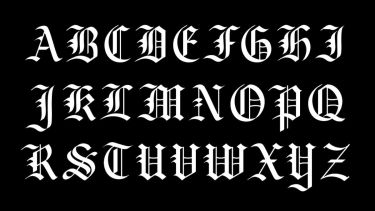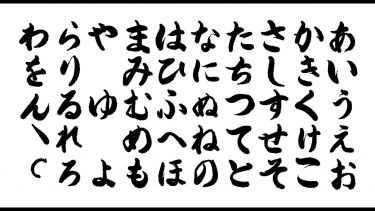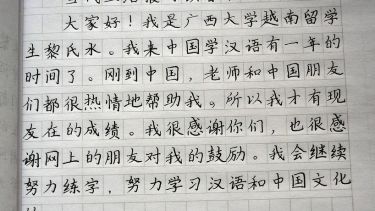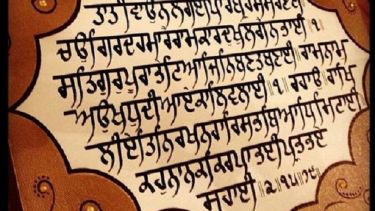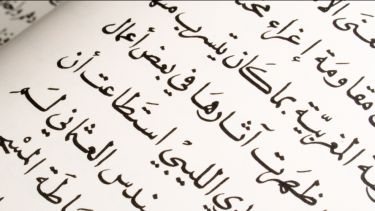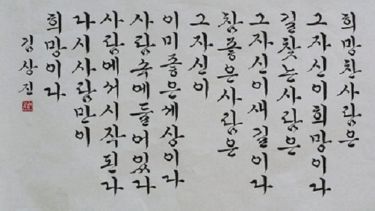Writing Systems #3 - Let’s Forget the Alphabet
Today, after spending two weeks on Punjabi and its writing system Gurmukhi, it’s time to have a little look at some of the terms I have thrown around in those blogs.
There are many different classifications of writing systems, and an alphabet, which is more of a conceptual idea for a language’s script or system of writing, simply won’t do. So, without further ado, let’s forget the alphabet.
Writing
What is a writing system? Well, that is a term that is kind of technical and easy for lay people to understand what that means, a true linguistic term for a writing system would be an orthography, and of those, there are, again, several styles of orthography. The orthography would also include graphs and graphemes of numeric and punctuative domains, sets of graphemes referring only to script would be known as a signary. People also use the terms letter, sign, symbol, glyph, and character to denote what linguists tend to call (although there is dispute with the term) a grapheme, the slightly more accurate term would be graph. The previous terms mentioned, like with alphabet, are meant to mean a general thing but are too interchangeable to be in accurate usage. So, when lay people describe the orthographies of Japanese, Hindi, Arabic, Mandarin, and Korean, amongst many others, describers of these language’s writing systems tend to say alphabet when instead they infer orthography. All of those aforementioned languages do not have alphabets. Japanese has two syllabaries and one logography, Mandarin also has a logography, Korean has a phonography, Hindi has an abugida, Arabic has an abjad – all of which I will be explaining.
Firstly, let’s get a little deeper into what an orthography is. An orthography is the written counterpart of a language to preserve the communications through both the ages and locations of a given variety of language. It is quite different to just saying it’s a written variant because writing leaves less room for error, it requires to be as concise as possible, as efficient at conveying its target meaning as possible, and to be quickly and widely understood by a range of language speakers – that is to say, writing should be, because of its nature, of a greater degree of mutual intelligibility and understanding. Language itself changes much more quickly and fluidly than the respective orthographies attempting to capture it, and this is another reason why spelling rules in English are so messy, and also why writing cannot be explained to be innate like speech can be. It is taught and stored on top of pre-existing linguistic information.
Alphabets
Now, alphabets! What’s that? An alphabetic orthography is one where each phoneme is generally represented by a single grapheme (a term we will simply use for a smaller unit of orthography) or even a digraph. Graphemically transparent alphabets such as Greek and Spanish always have their graphemes correspond to the expected sounds, whereas English and French are graphemically opaque because there are many times where the phonemes spoken do not follow the graphemes written out. Now, abecedaria (singular: abecedarium), are the generally agreed upon arrangement of graphemes within a signary, and in alphabetic systems, you could just pick the graphemes from it and concatenate them into strings to form words. This is not true of all orthographies…
Syllabaries
It’s time for a cheeky syllable! Yes – syllabaries! As the name suggests, syllabaries are, instead of a single phoneme represented generally by a single grapheme, a whole syllable represented by a grapheme. Thus, multiple phonemes are represented per grapheme. A perfect example would be the Japanese Kana signaries of Katakana (used for loanwords and onomatopoeia), and Hiragana, used commonplacely. The syllables in Japanese almost always consist of a vowel centre/nucleus, and usually with a consonant onset that can sometimes be a biconsonantal onset (a double consonant start). Very rarely does Japanese employ a coda (end sound), but it can do. If we were writing <Hiragana>, that would use eight graphemes in a transparent alphabet, but in a syllabary, it would only use four. The benefit of this is that more space can be saved when writing, but the drawback is that there are usually double the amount of letters in a syllabary than in an alphabet.
Logographies
There are alphabets where phonemes correlate to graphemes, syllabaries where syllables correspond to graphemes – anything else? Well, what about words? Or elements of words? Whilst phonemes makeup syllables, syllables don’t directly make up words, they can make up morphemes which in turn make up words. Morphemes are the little pieces of words that have meaning, but otherwise on their own do not have any real meaning, yet when we add them to certain root words, we still understand intended meaning despite the created word not necessarily being real. An example of this could be the root ‘fast’ and the morpheme ‘-ly’ to create ‘fastly’ – we understand what it means regardless of it being an improper word. The next system one-ups phonemic and syllabic graphemes in the form of morphemic graphemes. This kind of writing system, such as Hanzi (Mandarin and Cantonese), is known as a logography, where a logo-like grapheme corresponds to one morpheme – which sometimes can be an entire word if it is monomorphemic. The logography is aptly named because of the semblance between logos and graphemes related to their meaning. This system allows for a vast number of graphemes within the orthography, which is a significant drawback, though it does allow for greater distinction within graphemes and saves on space in a similar way to syllabaries.
Abugidas
Are there things similar to both a syllabary and an alphabet like some form of hybrid? Yes! These are known as abugidas and are better thought of as a distinct category upon the spectra of orthographies. Gurmukhi (Punjabi) and Devanagari (Hindi) are abugidas where elements of graphemes correspond to phonemes but ought to be built into syllables by adding diacritics that also correspond to certain phonemes. There is a primary system of graphemic notation combined with a further secondary system that can manipulate a base graph into a fully syllabic grapheme. Abugidic signaries tend to have multiple abecedaria due to having layered notation systems.
Abjads
Now there are also abjads where graphemes correspond to something in between phoneme and syllable. The graphemes in abjadic signaries can be argued to be partially alphabetic as the graphs themselves refer to a particular phoneme. They are also somewhat abugidic as the graphs refer to consonants and lack any marking of vowels, which has been said to be an incomplete and unspecified syllable, as with abugidas desiring to generate words syllabically. Abjads are not syllabaries as the vowels are inferred in speech and more recently, some diacritical markers on more unclear graphemes have been used to disambiguate pronunciation. Examples of abjad calligraphies include Qalam An-Naskh (Arabic) and Nasta’līq (Urdu) where there is a more universal orthography across Arabic writing systems that tend to be differentiated by calligraphies (which I’ll look at next week).
Phonographies
In Hangul (Korean), we see something else yet again – though it does bear resemblance to abugidic, alphabetic, syllabic, and abjadic signaries, most writing systems have very interconnected and somewhat hybridised regions if closely inspected. Hangul is a phonography (or a phonemic orthography) where, very similarly to abugidas, a syllable must be generated. Unlike abugidas and abjads that have base letters, phonemic orthographies only have a subsystem of graphs that correspond to phonemes. These graphs act almost as the graphemes of an alphabet, but similarly, like the diacritical graphs in abugidas. Each syllabic grapheme contains three graphs that form the grapheme, and Korean is both a phonemically and graphemically transparent language and is the most transparent of the better-known orthographies.
We really have been over the main six classifications, but I’d also like to take a look at some other systems of writing such as calligraphy and stenography…
Written by DP, Digital Student Ambassador, on 10 February 2022.


